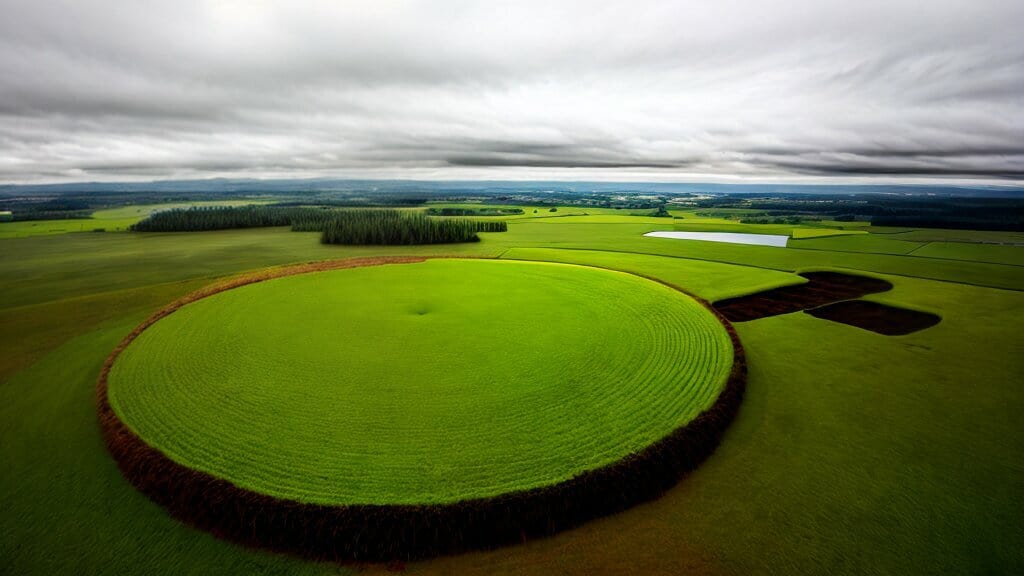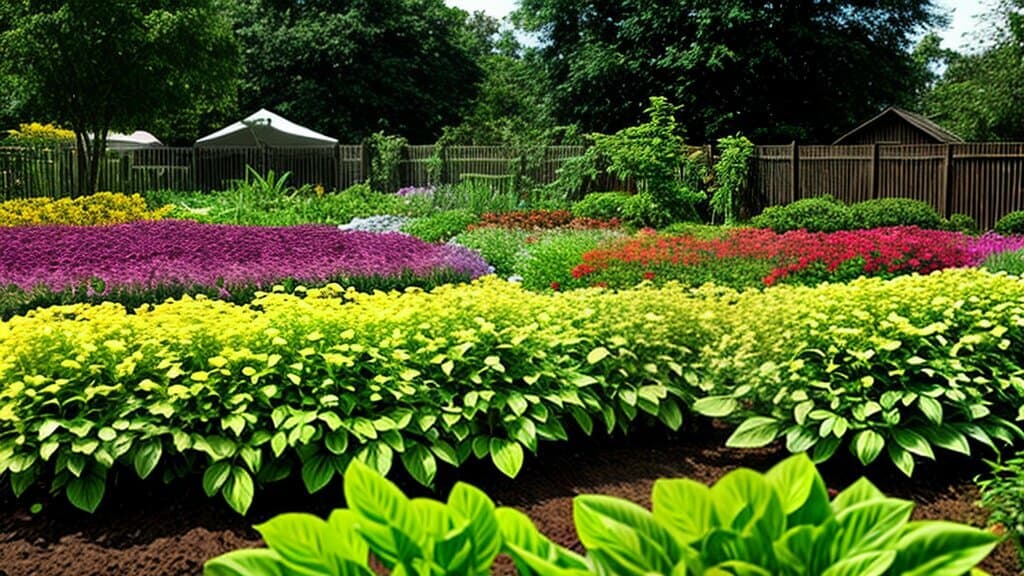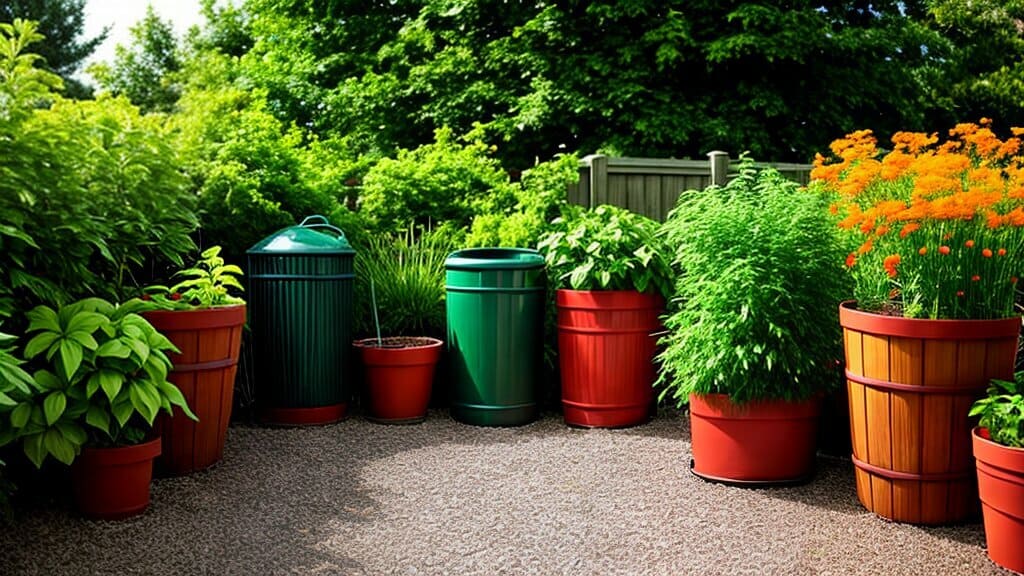Peat moss is a common gardening resource that is widely used by enthusiasts and professionals alike. While it is a popular additive in soil mixes and mulches, many people may not be aware of its origins and impact on the environment. In this article, we will explore the history of peat moss and examine its journey from its natural habitat to our gardens. We will also discuss the environmental implications of its harvesting and provide some sustainable alternatives.

Key Takeaways:
- Peat moss is a popular gardening resource used in soil mixes and mulches.
- Understanding the origins and production process of peat moss can help gardeners make more informed decisions.
- The harvesting process of peat moss has significant environmental implications.
- There are alternative options to peat moss that are more sustainable for the environment.
What is Peat Moss?
Peat moss, also known as sphagnum moss, is a type of organic matter that is commonly used as a gardening resource. It is created from the partially decayed remains of various plants that have accumulated in bogs, marshes, and other wetland areas over thousands of years.
Peat moss is highly valued for its water retention properties, which make it an excellent addition to soils and potting mixes. It is also an effective soil conditioner, helping to improve soil structure and fertility.
For gardening enthusiasts, peat moss is a versatile and essential material that can be used for a variety of purposes, including seed starting, transplanting, and as a top dressing for lawns. Its popularity in the horticulture industry has led to its widespread use in both commercial and residential settings.
Image source: https://seowriting.ai/32_6.png
Understanding Peat Moss Origins
Peat moss, also known as sphagnum peat moss, is a natural organic material commonly used in gardening. This moisture-absorbing material has been harvested for centuries and is a popular additive to soil mixes due to its ability to improve soil aeration and water retention capabilities.
The process of extracting peat moss involves removing the top layer of vegetation and digging down into the underlying peat layer. The peat is then harvested and dried before undergoing further processing to produce the final product. However, this method of harvesting has significant environmental impacts.
The Environmental Impact of Peat Moss Harvesting
Peatlands, which are the natural habitats of peat moss, contain vast stores of carbon. Harvesting peat from these areas releases this carbon into the atmosphere, contributing to greenhouse gas emissions and climate change. Additionally, the destruction of these habitats has negative impacts on biodiversity and disrupts the local ecosystem.
Peat moss harvesting also involves draining the peatlands, which leads to soil degradation and erosion. This can cause damage to surrounding waterways and ecosystems, as well as affecting the overall landscape.
Although peat moss has been a popular gardening resource for many years, many people are now turning to sustainable alternatives to reduce their environmental impact. As the industry continues to evolve, it is important to consider the long-term effects of peat moss harvesting on the environment.
How is Peat Moss Harvested?
Peat moss harvesting involves several methods and techniques that vary depending on the location and specific conditions of the peat bog. Generally, the process begins with the removal of any surface vegetation or debris to expose the top layer of peat.
The first stage of harvesting involves using a milling machine to cut into the peat bog and remove the top layer of peat. This layer is typically composed of partially decomposed plant material that has accumulated over thousands of years. Once this layer is removed, the underlying peat can be accessed.
To harvest the underlying peat, workers use specialized equipment such as vacuum harvesters or mechanical dredgers. These machines extract the peat from the bog and deposit it into large containers or trucks for transport to processing facilities.
During the harvesting process, it is important to maintain the integrity of the peat bog by avoiding excessive drainage or soil disturbance. Overharvesting or improper harvesting methods can have negative impacts on the ecosystem and the ability of the peat bog to regenerate over time.

“The harvesting of peat moss has been a controversial topic due to concerns over its environmental impact.”
Once the peat has been harvested, it is transported to processing facilities where it undergoes additional treatments such as screening, washing, and sterilization to remove any impurities and prepare it for distribution.
Overall, the process of harvesting peat moss involves careful planning and implementation to ensure minimal environmental impact and sustainable practices. As demand for peat moss continues to grow, it is important for the industry to prioritize responsible harvesting methods and explore sustainable alternatives.
Peat Moss Sources and Suppliers
Peat moss is widely available across the United States and Canada, with numerous sources and suppliers offering various products to suit the needs of different gardeners.
Some popular sources of peat moss include bogs and other wetland areas, where the moss grows naturally. In addition, peat moss can be harvested from peatlands, which are typically found in northern regions such as Canada and Russia.
Key suppliers in the industry include companies such as The Scotts Miracle-Gro Company, Sun Gro Horticulture, Premier Tech, and Lambert Peat Moss, among others. These suppliers typically offer a range of peat moss products, including different grades and blends to suit various gardening needs.

When selecting a peat moss supplier, it is important to consider factors such as product quality, availability, and price. It may also be helpful to read reviews or consult with other gardeners to determine which brands or products are most highly recommended.
The Manufacturing Process of Peat Moss
Peat moss is derived from the decaying remains of sphagnum moss, which are found in bogs located in areas with cool and wet climates. The production process of peat moss involves the collection of this decaying organic matter from these bogs.
The extraction process involves the use of heavy machinery such as excavators and tractors to remove the top layer of vegetation and peat from the bog. The peat is then loaded onto trucks and transported to a processing facility for further treatment.
After extraction, the peat is screened to remove any large debris or impurities. It is then mixed with limestone to adjust the pH level to around 6.0, which is ideal for plant growth. The mixture is then wet down and allowed to decompose anaerobically for several months. This causes the peat moss to break down and form a homogenous mixture with the limestone, resulting in a light, fluffy texture.
The final stage of the manufacturing process involves compressing the peat moss into bales or bags for distribution. The compressed bales of peat moss are wrapped in plastic to maintain moisture levels and prevent the growth of bacteria and other microorganisms.

The manufacturing process of peat moss is resource-intensive and can have adverse environmental impacts if not managed sustainably. However, many peat moss manufacturers are committed to sustainable practices, including responsible extraction methods, habitat restoration, and reduced carbon emissions.
Peat Moss Treatment and Preparation
Before use in gardening or horticultural applications, peat moss should be properly treated and prepared to ensure optimal plant growth. This typically involves soaking the peat moss in water for several hours to rehydrate it and make it easier to handle. The peat moss can also be mixed with other organic or inorganic materials such as compost, sand, or perlite to improve nutrient content and drainage.
Overall, the manufacturing process of peat moss is critical to the production of this valuable gardening resource. While the environmental impact of peat moss harvesting is a cause for concern, sustainable practices and alternative options can help to minimize these impacts.
The Distribution of Peat Moss
Once harvested and processed, peat moss is distributed to various suppliers and retailers for use in gardening and agricultural applications. The primary sources of peat moss are countries such as Canada, Ireland, and the Baltic States, which have large deposits of this natural resource.
Peat moss is typically packaged in compressed bales or bags for easy handling and transport. It is available for purchase at most gardening centers and hardware stores, as well as online retailers.
When purchasing peat moss, it is important to consider the intended use and quality of the product. Look for brands that are certified by organizations such as the Canadian Sphagnum Peat Moss Association or the Irish Peatland Conservation Council to ensure that the product is ethically harvested and of high quality.

Environmental Impact of Peat Moss Harvesting
Peat moss harvesting can have significant environmental impact, particularly in the areas where it is extracted. The process can lead to the destruction of delicate ecosystems, loss of biodiversity, and release of greenhouse gases.
Peat bogs are important carbon storage sites, holding up to 30% of the world’s soil carbon. When peat moss is extracted, this carbon is released into the atmosphere, contributing to global climate change. Additionally, peatlands are important habitats for rare and endangered species, and the destruction of these areas can have significant negative impacts on biodiversity.
Harvesting peat moss can also lead to water pollution, as the process requires the draining of wetlands and can result in the contamination of nearby water sources. This can have significant impacts on local wildlife and ecosystems.
Solutions for Reducing Environmental Impact
While the negative environmental impacts of peat moss harvesting are significant, there are steps that can be taken to reduce these impacts. For example, peat moss can be harvested sustainably, with a focus on minimizing damage to sensitive ecosystems and reducing greenhouse gas emissions.
Additionally, alternatives to peat moss, such as coconut coir or compost, can be used in gardening and horticulture. These materials offer comparable benefits to peat moss, while also being more sustainable and environmentally friendly.
In recent years, there have been growing calls for increased regulation of the peat moss industry, as well as greater public awareness of the environmental impacts of harvesting this resource. By taking steps to reduce our reliance on peat moss and exploring more sustainable alternatives, we can help to mitigate the negative environmental impacts of the gardening industry.

Sustainable Alternatives to Peat Moss
As concerns grow about the environmental impact of peat moss harvesting, many gardeners and industry experts are seeking alternative resources that are both sustainable and eco-friendly. Here are a few options to consider:
- Coco coir: Made from coconut husks, coco coir is an excellent alternative to peat moss. It is highly renewable and sustainable, making it an eco-friendly choice for gardeners.
- Rice hulls: Rice hulls are another sustainable alternative to peat moss. They are lightweight, easy to handle, and provide excellent drainage for plants.
- Compost: Compost is a natural and sustainable way to enrich soil. It can be made from kitchen scraps, yard waste, and other organic materials and provides many of the same benefits as peat moss.
- Leaf mold: Leaf mold is another alternative to peat moss that is easy to make and highly sustainable. It involves the decomposition of leaves into a rich, crumbly substance that can be used as a soil conditioner.
It is important to note that while these options are sustainable and eco-friendly, they may not always be readily available or cost-effective. As the demand for alternative resources grows, it is likely that more options will become available in the future.
Ultimately, the choice to use peat moss or a sustainable alternative is a personal one, and will depend on individual gardening needs and environmental concerns. However, by exploring alternative resources, gardeners can take steps towards a more eco-friendly and sustainable future.

Peat Moss Industry and Regulations
The peat moss industry is highly regulated, with many countries having established laws and regulations governing its production, harvesting, and distribution. For example, the European Union (EU) has set strict regulations on the use of peat in horticulture, aiming to reduce peat extraction by 50% by 2030.
In the United States, the Environmental Protection Agency (EPA) has implemented regulations to reduce emissions from peat production facilities. These regulations require peat producers to implement best practices to minimize environmental impact.
There are also various certifications available for peat moss products, such as the Responsible Peatland Management certification and the RPP (Responsible Peatland Practices) certification, which promote sustainable and responsible peat moss usage.
Despite these regulations and certifications, the peat moss industry continues to face scrutiny for its environmental impact. Many environmental advocates argue that the industry’s extraction of peat moss contributes to the degradation of peatlands and releases large amounts of carbon dioxide into the atmosphere.

Efforts to promote sustainable alternatives to peat moss and reduce the industry’s environmental impact are ongoing. As consumers become more aware of the environmental impact of their purchasing decisions, it is likely that demand for sustainable alternatives to peat moss will continue to increase.
The Future of Peat Moss
The future of peat moss is uncertain. The industry has faced criticism for the environmental impact of harvesting the material, and there is a growing demand for sustainable alternatives. However, peat moss remains a popular resource for gardeners and the horticultural industry.
One potential avenue for the future of peat moss is the development of more sustainable harvesting practices. Companies and organizations are exploring ways to minimize the impact on peatlands and reduce carbon emissions during production and transportation.

Another possibility is the widespread adoption of sustainable alternatives to peat moss. As gardeners become more environmentally conscious, they may begin to seek out alternatives such as coconut coir, compost, and leaf mold.
Whatever the future holds, it is clear that the peat moss industry will continue to evolve in response to changing consumer preferences and increasing environmental awareness.
Conclusion
Peat moss is a popular gardening resource that has been used for centuries. It has unique properties that make it ideal for use in various applications, from improving soil quality to providing a suitable environment for plant growth. However, the harvesting and extraction of peat moss have raised concerns about the environmental impact of these processes.
Sustainable Alternatives
As discussed, there are sustainable alternatives to peat moss that can minimize environmental impact, such as compost, coconut coir, and pine bark. It is important for gardeners and consumers to consider these options and make informed decisions about the products they use.
Industry and Regulation
The peat moss industry is subject to regulations and certifications aimed at reducing environmental impact and promoting sustainable practices. It is important for companies and individuals involved in the industry to adhere to these standards and work towards a more sustainable future.
The Future of Peat Moss
The future of peat moss is uncertain, as concerns about the environmental impact of its extraction continue to grow. However, there are ongoing efforts to develop more sustainable practices and alternative products that can meet the needs of consumers and gardeners. As the industry evolves, it is likely that we will see significant changes in the way peat moss is harvested and used.
Overall, peat moss has a rich history and remains an important resource for gardeners and landscapers. However, it is important to consider the environmental implications of its use and seek out sustainable alternatives wherever possible. With continued research and innovation, we can work towards a more sustainable future for the peat moss industry and the planet as a whole.
FAQ
Q: What is peat moss?
A: Peat moss is a popular gardening resource that is used to improve soil quality and retain moisture.
Q: How is peat moss harvested?
A: Peat moss is harvested using various methods and techniques, including the use of specialized machinery to remove the top layer of vegetation and extract the peat.
Q: Where does peat moss come from?
A: Peat moss is primarily sourced from bogs and wetland areas that have accumulated decomposed plant material over thousands of years.
Q: How is peat moss manufactured?
A: The manufacturing process of peat moss involves drying and compressing the harvested peat to remove moisture and create a lightweight product.
Q: What are the environmental impacts of peat moss harvesting?
A: Peat moss harvesting can have negative environmental impacts, including habitat destruction, carbon emissions, and disturbance of water ecosystems.
Q: Are there sustainable alternatives to peat moss?
A: Yes, there are sustainable alternatives to peat moss, such as coconut coir, compost, and other organic materials that can be used to improve soil quality.
Q: How is peat moss distributed?
A: Peat moss is distributed to consumers and gardening enthusiasts through various channels, including garden centers, nurseries, and online retailers.
Q: What is the future of peat moss?
A: The future of peat moss is uncertain, with growing concerns about its environmental impact leading to increased interest in sustainable alternatives and potential industry regulations.
Q: What is the peat moss industry like?
A: The peat moss industry is a significant player in the gardening and horticulture sector, with various companies and suppliers involved in the production and distribution of peat moss products.
Q: What are the regulations for the peat moss industry?
A: The peat moss industry may be subject to regulations and certifications aimed at promoting sustainable harvesting practices and minimizing environmental impact.
